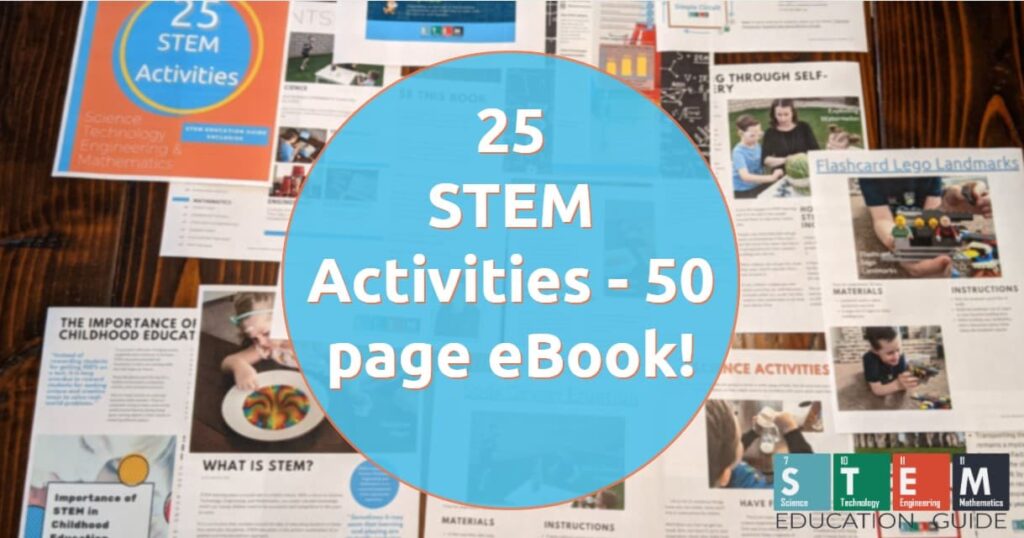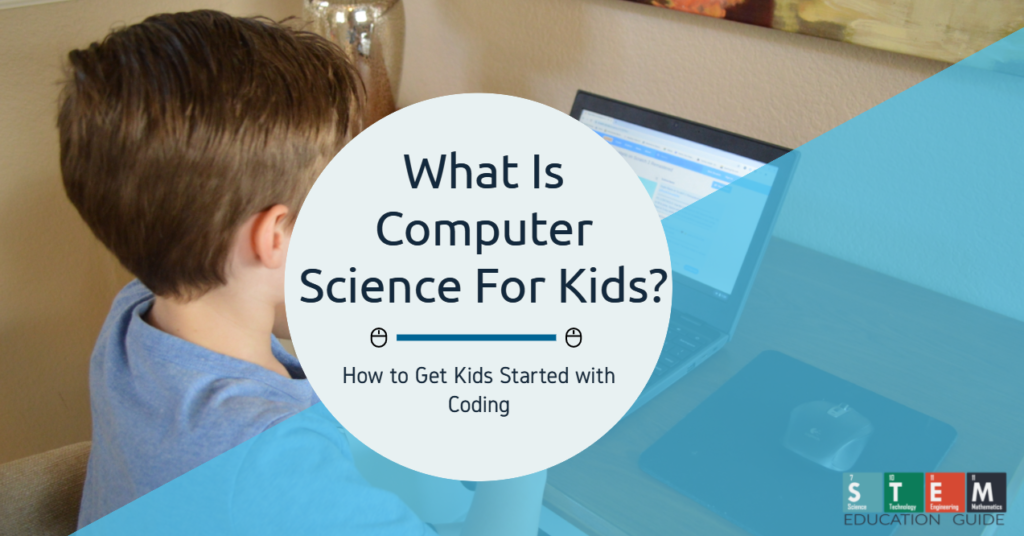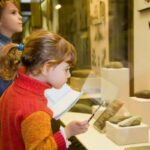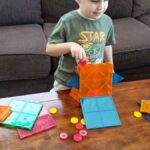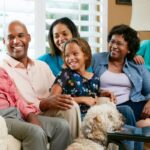When grappling with a unique problem or situation at work, my colleagues often suggest taking “the 30,000 foot view.”
This phrase originates from the onset of commercial flight and is meant to suggest the view from an airplane.
What about the view from space?
That would be a 327,360 foot view — the approximate distance to the Von Karman Line, the boundary between Earth’s atmosphere and space.
From that distance, our problems become invisible and new curiosities come into view. Beyond our protective layer of atmosphere lies the solar system.
In this article about solar system facts for kids, we’ll cover some of the most interesting facts you’ll love to share!
—– If you’d like some STEM activity ideas, make sure to grab our FREE eBook on 25 STEM activities here. —–
Table of Contents
What Is a Solar System?
Our solar system is a planetary system, similar to thousands of others across the universe. Planetary systems are made of planets that orbit (or move in a circle around) a central star.
Our star is called sol, which means “sun” in Latin. That’s where the name solar comes from.
According to Princeton University, there are 258 known planetary systems in the universe, containing 302 planets. Many of these include just a single planet orbiting its star, while our solar system contains 8 planets. That makes us unique.
Planets
In 2006, the International Astronomical Union (IAU) adopted the following definition of a planet:
- It must orbit a star (in our cosmic neighborhood, the Sun).
- It must be big enough to have enough gravity to force it into a spherical shape.
- It must be big enough that its gravity cleared away any other objects of a similar size near its orbit around the Sun.
— National Aeronautics and Space Association (NASA)
As mentioned in our post on Black STEM leaders, Neil DeGrasse Tyson’s work helped inform this redefinition, which caused Pluto to lose its planetary status. Instead, Pluto is now classified as a dwarf planet.
A dwarf planet meets the first two criteria defined by the IAU, but does not have enough mass to clear away other objects in its orbit.
The eight planets that orbit sol from nearest to furthest are Mercury, Venus, Earth, Mars, Jupiter, Saturn, Uranus, and Neptune. Planets closer to the sun are too hot to support life while distant planets are too cold, but Earth is just right. That’s why Earth is called a “Goldilocks planet.”
Let’s take a quick glance at each of our celestial neighbors.
Do your kids love computers? Please take a look at our article, What Is Computer Science For Kids? How to Get Kids Started Coding!
Mercury
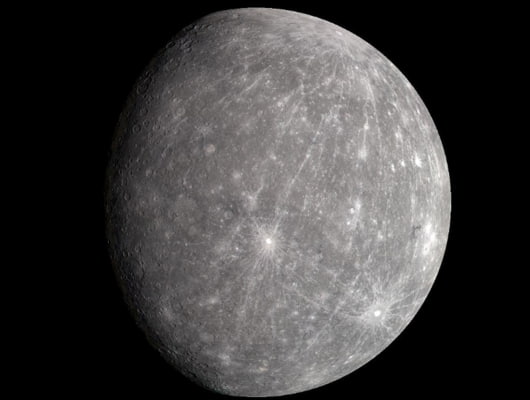
Mercury is not only the closest planet to the sun, but it is also the smallest and the fastest. Mercury is also a terrestrial planet, meaning that the terrain is rocky. Even though it’s Sol’s neighbor, it is surprisingly not the hottest planet.
Venus
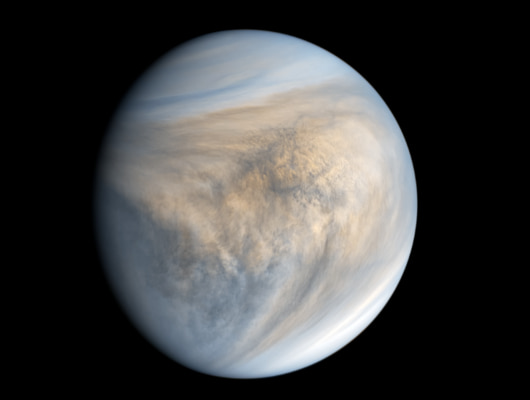
Despite being similar to Earth in size and proximity to the sun, Venus’s climate couldn’t be more different. The hottest planet in our solar system is Venus, due to its dense atmosphere, which traps heat. This quirky planet also spins in the opposite direction from most others!
Venus has an atmosphere mainly composed of carbon dioxide with clouds made up of sulfuric acid, giving it a yellowish hue when viewed from space.
Earth

Our Goldilocks planet, Earth is not only the ideal temperature to support life, it’s also an ocean planet. In fact, Earth is the only planet in our solar system with liquid water on its surface.
Mars
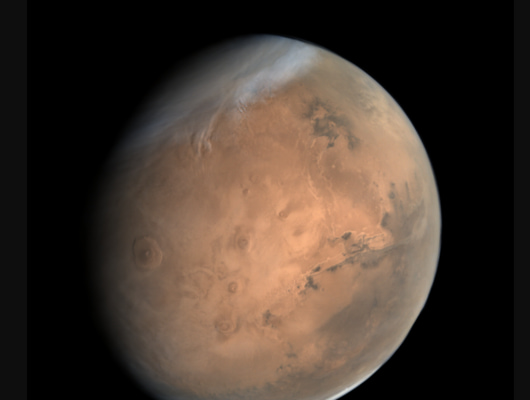
Sometimes called “the red planet,” Mars is our smaller, chillier neighbor. In part because of its proximity to Earth, it’s the planet that we’ve explored the most. Evidence shows that Mars was likely warmer and wetter billions of years ago — a lot like Earth. Mars is also a rocky planet with changing weather and seasons.
Jupiter
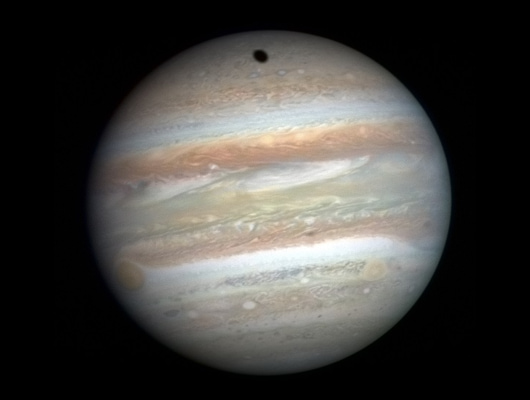
Jupiter is the largest planet in our system: roughly 1,300 Earths could fit inside. Its tumultuous atmosphere is composed of hydrogen and helium gas. The big red spot that makes Jupiter so recognizable is actually an enormous storm, bigger than Earth, which has lasted for hundreds of years.
Saturn
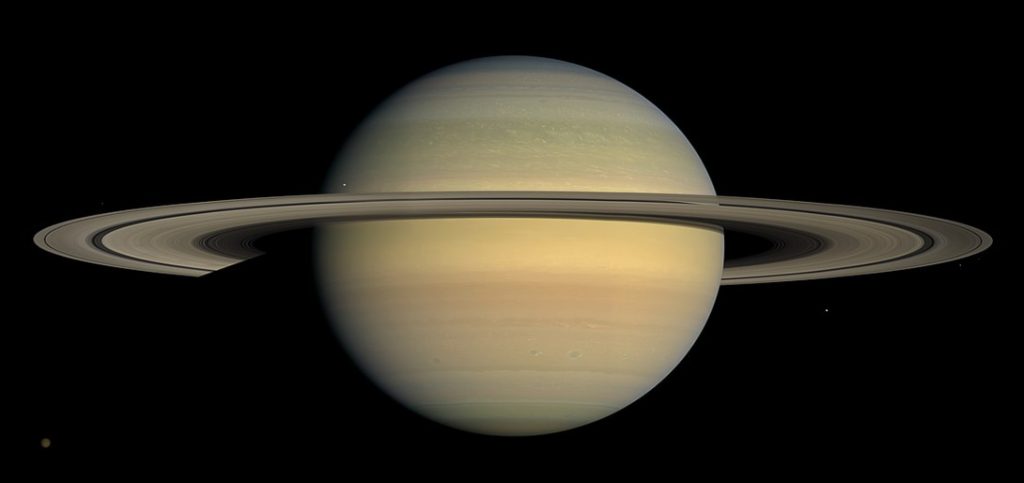
Saturn is a lot like Jupiter, but a little bit smaller and with magnificent rings. Made up of shattered pieces of asteroids and moons, Saturn’s famous rings extend as far as 175,000 miles from its surface. Saturn also boasts 83 moons, some of which could potentially be hospitable to life (even though Saturn itself is not).
Uranus
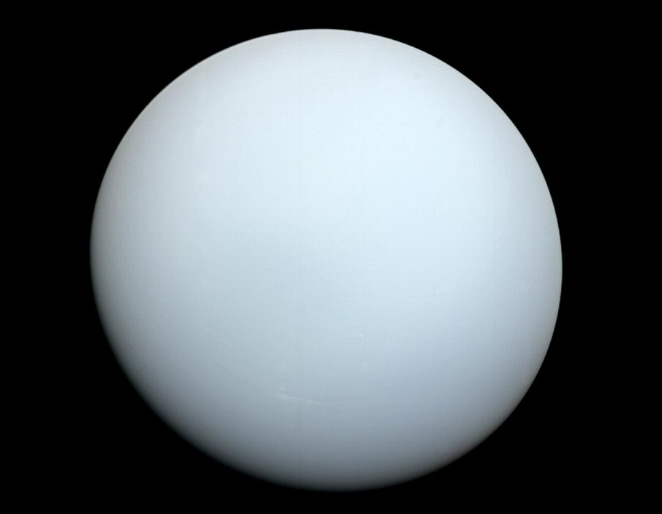
Like Saturn, Uranus has rings, but they are much narrower, and they encircle the planet vertically. Unlike Saturn, Uranus is an ice giant, composed of heavier elements that include oxygen and sulfur. This mysterious giant rotates on a skewed axis, which is off-center — scientists do not know why.
Neptune
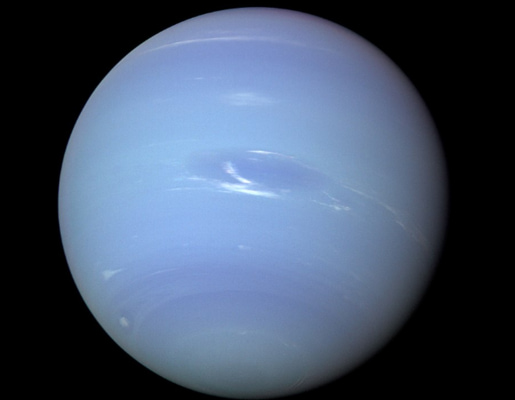
Our second ice giant, Neptune, is further from sol than any other planet in our system. As such, it is incredibly cold and dark. It also has the longest orbit at 165 Earth years. This bright blue planet experiences greater winds than any other in our solar system and spins on a curiously off-kilter axis, similar to Uranus.
Gas Giants
No solar system facts for kids article is complete without mentioning Gas Giants. Gas Giants are an intriguing subject for space enthusiasts.
These planets, which include Jupiter, Saturn, Uranus, and Neptune, are named due to their massive size and gaseous composition. Their sizes range from 14 times that of Earth for Neptune to a whopping 318 times the size of Earth for Jupiter.
The four gas giants in our solar system were formed during the early stages of the solar system’s formation. They are mostly hydrogen and helium gas with traces of other elements like methane and ammonia. Their atmosphere contains swirling clouds that create bands around the planet that can be seen through telescopes on Earth.
Jupiter is a giant planet in our solar system, with over 80 to 95 moons orbiting around it. Its gravitational pull has influenced many small objects in the outer solar system, including asteroids and comets.
Asteroid Belt
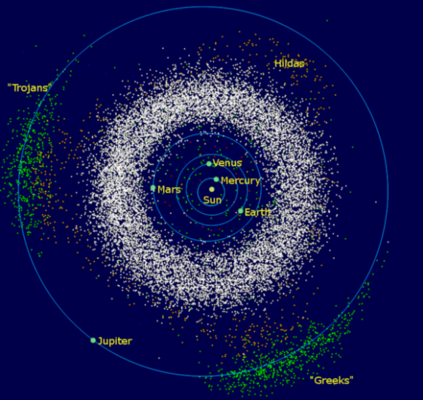
The asteroid belt is a region of our solar system that lies between the orbits of Mars and Jupiter. It is home to millions of small rocky bodies, remnants from our solar system’s formation over 4.6 billion years ago. The asteroids range in size from tiny pebbles to large boulders, with the biggest being Ceres, which is over 590 miles (940km) wide.
Despite its name, the asteroid belt isn’t as densely packed as it may seem in popular culture depictions. In fact, there is a lot of empty space within the belt, making it possible for spacecraft to navigate through it safely. However, collisions can still occur between asteroids, and these events have been known to create smaller fragments or even new asteroids.
Scientists continue to study the asteroid belt to understand better how our solar system formed and evolved.
Kuiper Belt
The Kuiper Belt is a region of our solar system that lies beyond Neptune’s orbit. It is a vast, icy disc-shaped region that extends from the orbit of Neptune out to around 50 AU (astronomical units) from the Sun. The belt is named after Dutch-American astronomer Gerard Kuiper, who first predicted its existence in 1951.
The Kuiper Belt contains thousands of small icy bodies, including dwarf planets such as Pluto and Eris. Scientists believe it may also contain several hundred thousand smaller objects with diameters greater than 100 km. These objects are remnants from the early solar system and may provide insights into how planets formed.
Despite being relatively close to Earth compared to other regions of our galaxy, studying the Kuiper Belt poses significant challenges for astronomers due to its distance and size.
Moons
Moons orbit around planets in the same way that planets orbit the sun. Although Earth only has one moon, there are approximately 224 known moons within our solar system.
Moons are wildly diverse and come in a variety of shapes and sizes with remarkably different features. Some moons have atmospheres, hidden oceans, or even volcanoes. Jupiter is orbited by 92 moons, including the largest moon in the solar system, an ocean moon, and a volcanic moon!
NASA’s comprehensive accounting of our solar system’s moons includes information about their histories, names, features, and predicted futures. You can even view photos taken through some of the organization’s powerful telescopes.
Other Fun Space Debris
Our huge and complex solar system is made up of more than planets and moons: there are also asteroids, comets, ice, and other space rocks.
Did you know that comets and shooting stars are not the same things? Comets are made of frozen dust, gas, and ice leftover from the creation of the solar system. They orbit the sun, just like planets do, but their orbits are incredibly long.
When a comet gets close to the sun, it heats up and forms a giant ball of flame as well as a glowing fiery tail. Even though they appear small to us from across the vast expanse of space, many comets are larger than Earth.
Shooting stars, on the other hand, are actually meteors. This can be any space debris, as small as a grain of sand or as large as an asteroid. They are solid, not gaseous like comets. When a meteor enters a planet’s atmosphere, it burns up and streaks across the sky as a shooting star. If the rocky debris does not burn up, but instead makes it to the planet’s surface intact, it’s called a meteorite.
Learn more about each of the mesmerizing pieces of our complex solar system by exploring NASA’s website, or check out the Solar System 101 video from National Geographic.
Milky Way Galaxy
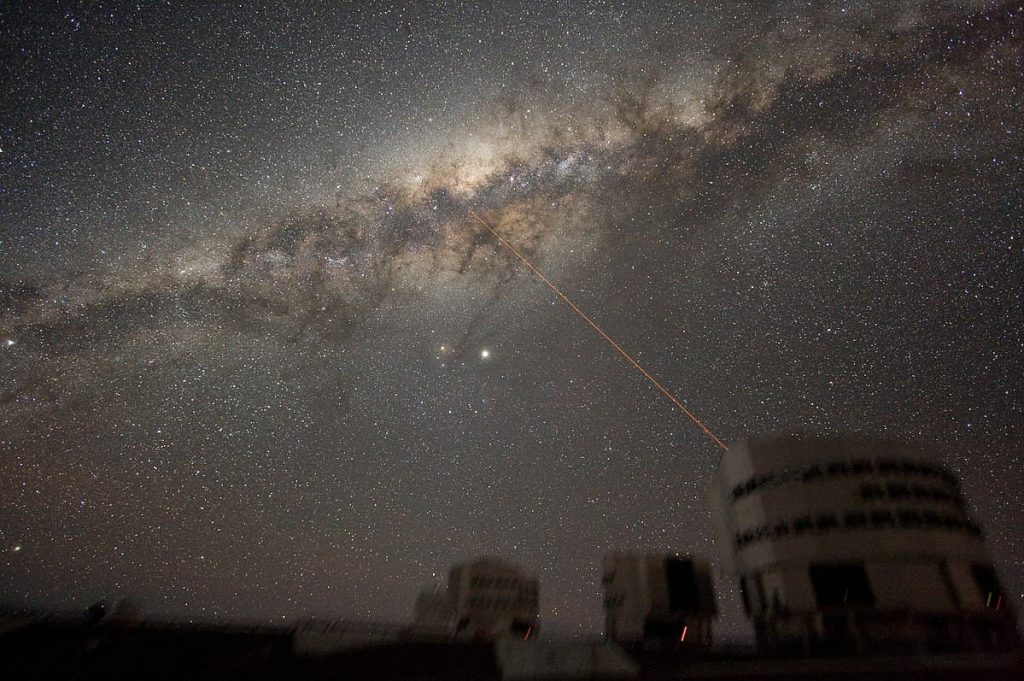
The Milky Way Galaxy is one of the universe’s most fascinating and mysterious objects. It is a spiral galaxy with over 200 billion stars, including our sun. The galaxy spans a great distance of about 100,000 light-years from end to end.
The Milky Way Galaxy is divided into several distinct regions, including the central bulge, disk, and halo. The central bulge is where most of the galaxy’s stars are concentrated and has a diameter of about 10,000 light-years.
The disk region contains young stars and gas clouds that form new stars, while the halo comprises old stars and globular clusters.
Scientists have been studying the Milky Way Galaxy for centuries, but we still don’t know much about it.
History, Mythology, and Discovery
The features of our solar system have impacted humans throughout history. Ancient people measured time with the phases of the moon and navigated by the stars. A day is the amount of time it takes for Earth to turn on its axis; a year is how long it takes for Earth to complete its orbit around the sun.
Understanding our unique planetary system is important, but information was limited prior to the age of enlightenment. For more than a thousand years, many believed that everything in space circled the Earth. Then, in 1543, Nicolas Copernicus developed a theory that Earth, along with a handful of other planets, actually orbited the sun.
Copernicus’s theory of a sun-centered, or heliocentric, solar system was hard to accept until Galileo invented the first telescope in 1610. In doing so, Galileo was able to observe moons orbiting Jupiter — something that didn’t make sense if everything was supposed to orbit the sun. this helped confirm the heliocentric model.
Following Galileo’s work, German mathematician Johannes Kepler published his own findings about the principles that govern planetary orbits, which allowed scientists to accurately predict the movement of all planets in our solar system. We still use Kepler’s mathematical laws of planetary motion today.
Wrapping Up Solar System Facts for Kids
Through telescopes, satellites, and space missions, scientists are constantly learning more about our solar system and the universe beyond. When you consider the fact that more than 90% of Earth’s ocean is still unexplored, it’s no surprise that there is yet more to discover in our vast planetary system.
As the organization that does most of that ongoing learning and exploring, NASA’s website is an ideal resource for uncovering accessible information. You can also find lesson plans and other educational materials through their Jet Propulsion Laboratories.
Check out our article, Unearthing the Facts on STEM Education.


